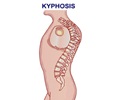A new study shows panoramic X-rays can identify postmenopausal women with low skeletal bone mineral density. Dental panoramic X-rays are taken
A new study shows panoramic X-rays can identify postmenopausal women with low skeletal bone mineral density. Dental panoramic X-rays are taken for the diagnosis of conditions affecting the teeth and jaws in clinical practice worldwide, to look at the mandibular cortical shape and width and refer the appropriate women for further BMD testing.
Researchers studied more than 300 women who had no symptoms of osteoporosis. X-rays were used to measure the cortical shape and width of the women’s jaws. About half of the women had a history of hysterectomy, oophorectomy, and/or estrogen use. The other half had no such history. Researchers also observed that the X-rays were just as sensitive as the widely used questionnaires in determining which women needed to have further BMD testing. However, dental X-rays are less specific than questionnaires, as they can indicate disease when there isn’t any or not indicate disease when it does exist say specialists. Thus researchers conclude that X-rays are a good first step in determining which women need additional testing .









